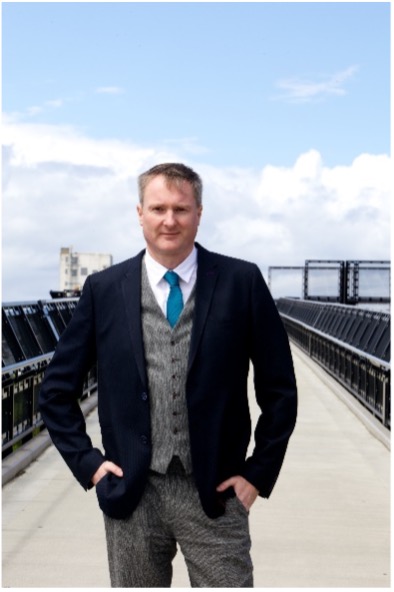
David Anderson: “Most people using our solution will be able to reduce the overhead of dependency management by about 85%.”
David, according to your studies, a Dependency Management table is the next step after Triage Tables to identify the class of service of the ticket. How did you come up with this approach?
Managing dependencies is a hang-up for lots of people, because they have scheduled something, and it takes longer than they expected due to some dependency that caused the delay. And then they wish they had scheduled to start working on the task earlier. This happens sufficiently often, and it makes people quite anxious, because they don`t want to look bad at work, but what they want is to make good quality decisions. They want to be seen as competent and to make decisions with confidence. Existing dependency management solutions use a lot of time and energy. They require a lot of analysis and often produce very fragile plans that don`t survive more than a few days because of uncertainty of unfolding events. So, we wanted to provide a better, a simpler, a faster, and low-cost solution. We knew there was a need, but there was also a challenge – it required yet another epiphany.
The key lies in understanding the Cost of Delay. If something is delayed and the impact is small, why do you care if there is a delay? You only care about delay if the impact is large. Therefore, you need effective dependency management only when the impact of the delay is sufficient. Triage Tables help to understand the impact / the cost of delay. And it turns out that only if an item requires the Fixed Date class of service, do we need to spend time, energy and perhaps money on managing dependencies. Otherwise, we can just let them happen and manage them as they occur.
So, we developed a strategy using a class of service concept to provide different classes of dependency management based on the cost of delay of the items. And it massively simplified the task of Dependency Management in Kanban. We think that most people using our solution will reduce the overhead of dependency management by 85%. They only need 15% of time, effort, energy, and money to manage dependencies than they`ve been probably spending so far. And that`s a huge improvement. We allow people to decide with confidence, quickly and easily, based on understanding of the cost of delay and the class of service of the item. Using look-up on our Dependency Management table people can select the correct policies for managing the dependencies and the correct classes of dependency management service.

David Anderson: “We allow people to decide with confidence, quickly and easily, based on understanding of the cost of delay and the class of service of the item.”
What inspired you to develop this dependency management strategy?
I kept hearing again and again that Dependency Management is a significant problem for people. At first, I was not paying a lot of attention, because I believed that Kanban already had a dependency management solution, which is the feedback mechanisms, known as the Kanban cadences, that are built into Kanban. And very specifically the operations review which is a feedback opportunity to provide information about the interaction between different service delivery workflows, the work that is flowing between different parts of the organization and whether it is flowing well or not. If you have a dependency management problem, you raise it at the operation review. And some action happens to modify the system, the processes, or the policies in the organization so that gradually dependency management gets faster and easier. That is why in my opinion for 15 years was that we already had a very adequate enterprise scale dependency management solution in a Kanban Method.
However, I would be teaching this to large companies and large groups of 50 or more people (eDreams in Barcelona, for example) and they kept saying “but tell us about dependency management in Kanban”. It was clear that there was no faith in the idea that you allow the dependency management solution to occur as an emergent outcome of feedback in the organization. People wanted something more prescriptive, some tool they can use. But at that time, I didn’t know what it should be. I didn`t want to have a heavy weight solution or to copy something that was already on the market. Something which many people felt was inadequate, expensive, and with fragile outcomes – we needed something new. It needed to be light-weight, easy to use, very tangible and prescriptive. Then I had another epiphany as those with Triage Tables and the Cost of Delay.

David Anderson: “It was clear that there was no faith in the idea that you allow the dependency management solution to occur as an emergent outcome of feedback in the organization. People wanted something more prescriptive, some tool they can use.”
This epiphany was inspired by clients like eDreams. The travel industry, particularly the airlines, already had a solution for high uncertainty dependencies. And that solution was the dynamic reservation systems and classes of reservation / booking. When we buy an airline ticket, we tend not to think about it much because we`ve used to tickets that provide a single class of reservation, which is that you`ve got a guaranteed seat on the plain.
However, airlines do sell other classes of reservation. They sell stand-by tickets. They are not that common nowadays, but they are still used particularly with dependency management problems in hot airports, like Chicago O`Hare or London Heathrow. If there is bad weather, plains get delayed, people get displaced, miss the connections and they have to be rescheduled on a different flight. Well, the way that airlines do that is that they book people on other flights using stand-by tickets. They tell you “go to the gate, stand there and if the plain is not full, you may get on”. Which means, that they have a set of guaranteed reservations, however, they also have some stand-by reservations too.
For some limited routes there is also such a type, as so-called shuttle-service. For example, British Airways in US operate it between London and New York, Iberia – between Madrid and Barcelona. If you have a shuttle ticket it is like turning up for a bus. You go there, show-up your shuttle ticket and they put you on the next available flight. The same as the next bus, that comes to the bus stop, you climb on and you drive away. So, there are 3 different methods for controlling the demand vs the capacity of the aircraft. They have sold guaranteed seats on the plain, stand-by tickets and some shuttle tickets, that take priority. And it just occurred to me that we could use a solution like that for how work flows through modern services organizations if we believe there is a dependency.
For example, you are running an advertising agency and you`ve got a request to build a campaign for a client. That campaign may require some custom photography, perhaps casting models in a studio with some special equipment, etc. And all of that has to be arranged: you need a producer, someone to cast models, a photographer, his assistants, lightning and so on. Well, if you believe that client wants the custom photography as a part of a campaign, then you make reservations. However, you know, that dependencies exist, so you reserve it all in some optional sort of way, so that you`ve got some time to decide and you may change your mind later.
So, suddenly these two concepts came together, and I realized that we could codify that in a formal way as Classes of Reservation and Dynamic Reservation system. After this epiphany, I realized that I`ve already seen these examples. One of which was eDreams and their finance department, another was in an existing case study from a medical research company called Posit Science, and the third one appeared in a published case study from a consultant in Finland. So, there was existing evidence of informal usage of Dynamic Reservation systems and all I had to do was to formalize it, so we could start teaching it and people could use the idea more broadly.

David Anderson: “There was existing evidence of informal usage of Dynamic Reservation systems and all I had to do was to formalize it, so we could start teaching it and people could use the idea more broadly.”
Do people need to have any special knowledge to use the Dependency management approach?
If we look at the Kanban Maturity Model (KMM), lower maturity organizations really lack the capabilities to adequately manage dependencies. They may try, but they don`t have the capability and it is more of something that just happens to them. The low maturity organizations, by definition, are very reactionary, they are not good at anticipation. Dependency management is a skill, a capability that starts to emerge around Maturity Level 3. We might see awareness of dependency around Maturity Level 2 and then active management at Level 3. But it`s a Maturity Level 4 organization that becomes good and confident at Dependency Management. Using our Dependency Management solution is a fast track to ML 4.
Both these Maturity Levels are pretty advanced. Do you think that market is mature enough to absorb and use Dependency Management studies?
I think that the fact that so many organizations struggle with dependency management is an indication that they are not ready and they are at a low maturity. Since we developed the KMM, we`ve come to understand that the vast majority of the market is Level 0 and 1, and most of the remaining ones are Level 2. But the best business benefits really kick in at Level 3 and 4. The things that people desire to be good at, like Dependency Management, need to be achieved at level 3 or 4. So our goal with KMM, Triage Tables, Dependency Management and the App has been to provide guidance, tools, capabilities to help organizations achieve Maturity Level 3 and 4 quickly, easily, predictably and with confidence.

David Anderson: “Our goal with KMM, Triage Tables, Dependency Management and the App has been to provide guidance, tools, capabilities to help organizations achieve Maturity Level 3 and 4 quickly, easily, predictably and with confidence”.
What are the next steps in this part of your studies? Any defined plans for the nearest future?
The next step in this area is to expand the Triage Tables solution. I`d like to provide a wider range of lead time to shelf-life ratios. So, the Triage Table itself will get bigger. There would be more options there and that`s really the essence of it – to make sure we cover all the possibilities that we see in the market. So that there is no need for additional sophistication or additional practices. We`ve already developed a very comprehensive solution for Dependency Management across an extensive network of services. We have an enterprise scale Dependency Management solution which is underpinned by mathematics and science, and still very accessible for people with limited education in technical subjects.

David Anderson: “We have an enterprise scale Dependency Management solution which is underpinned by mathematics and science, and still very accessible for people with limited education in technical subjects.”
Learn more about Dependency Management in Kanban Maturity Model book or get access to full book content online using kmm.plus.
Download Dependency Management Poster here.
Attend training at the David J Anderson School of Management to learn more about advanced Kanban studies and how they can help your business, or find your local trainer at Kanban University to start your Kanban journey.

Recent Comments